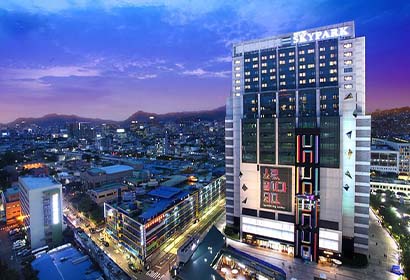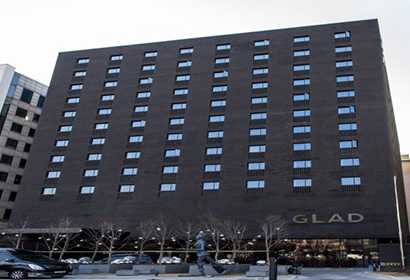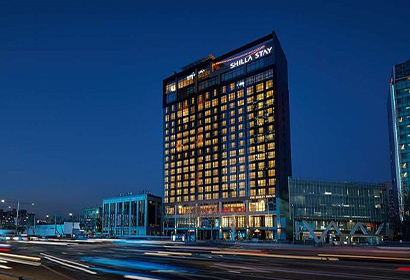Featured Holidays May
19.5°C
Today (16-07-2025)
DEALS
HIGHLIGHTS

South Korea is a country where ancient traditions meet cutting-edge modernity. The capital city, Seoul, is a vibrant metropolis where futuristic skyscrapers tower over centuries-old palaces like Gyeongbokgung and Changdeokgung. The coastal city of Busan offers a different charm with its beautiful beaches, bustling fish markets, and the stunning Haedong Yonggungsa Temple perched on a cliff overlooking the sea. For history enthusiasts, the UNESCO-listed city of Gyeongju, often called "the museum without walls," is a treasure trove of ancient temples, royal tombs, and cultural relics from the Silla Dynasty. Jeju Island, with its volcanic landscapes and scenic beauty, is a must-visit for nature lovers.
South Korea offers a variety of activities for every traveler. In Seoul, explore the trendy neighborhoods of Hongdae and Gangnam, where you can experience the country’s famous K-pop culture, shop for the latest fashion, and enjoy the vibrant nightlife. Visit the DMZ (Demilitarized Zone) for a glimpse into the country’s divided history. Hike up Namsan Mountain for panoramic views of Seoul, or visit the Bukchon Hanok Village to experience traditional Korean houses. In Busan, relax on Haeundae Beach, visit the colorful Gamcheon Culture Village, or take a scenic hike in Taejongdae Park. For a unique experience, visit one of the many jjimjilbangs (Korean bathhouses) to unwind and rejuvenate. And don’t miss a visit to a traditional tea house in Insadong, where you can savor the delicate flavors of Korean teas.
SEASONS TO TRAVEL
March
Hottest: 15°C Temperature
Coldest: 0°C Temperature
Average: 8°C Temperature
April
Hottest: 20°C Temperature
Coldest: 7°C Temperature
Average: 14°C Temperature
September
Hottest: 27°C Temperature
Coldest: 16°C Temperature
Average: 22°C Temperature
October
Hottest: 20°C Temperature
Coldest: 8°C Temperature
Average: 14°C Temperature
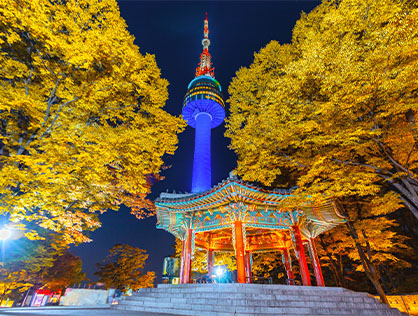
South Korea is a year-round destination, with each season offering its own charm. Spring (March to May) is one of the best times to visit, as the cherry blossoms bloom, creating a pink canopy across the country, especially in Seoul’s Yeouido Park and Gyeongju’s Bomun Lake. Summer (June to August) is hot and humid, perfect for beach trips to Busan or Jeju Island. Autumn (September to November) is another ideal time, with the landscape ablaze with vibrant fall foliage, particularly in the mountain regions like Seoraksan and Nami Island. Winter (December to February) is cold, but it’s the best time for skiing in the resorts of Gangwon-do or enjoying the festive winter illuminations in Seoul.
CULTURE & TRADITIONS

South Korea’s culture is a harmonious blend of traditional and contemporary influences. Confucianism has deeply influenced Korean society, emphasizing respect for elders, family values, and the importance of education. Traditional Korean music, known as gugak, and dance forms like Buchaechum (fan dance) reflect the country’s rich cultural heritage. The art of hanbok, the traditional Korean attire, is still celebrated and worn during special occasions like weddings and festivals. South Korea is also famous for its meticulous craftsmanship in pottery, calligraphy, and hanji (traditional Korean paper). Festivals like Seollal (Lunar New Year) and Chuseok (Korean Thanksgiving) are celebrated with much enthusiasm, where families come together to perform ancestral rites, share traditional food, and play folk games.
PREFFERED HOTELS
NATURE & WORTH A VISIT EXPERIENCE
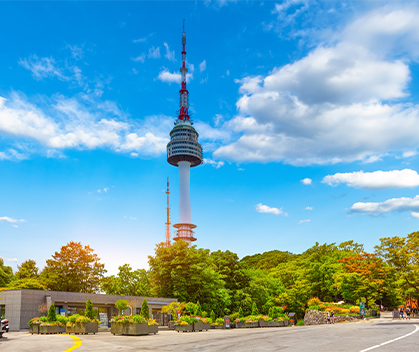
Namsan Seoul Tower
Namsan Seoul Tower, perched atop Namsan Mountain in central Seoul, offers panoramic views of the city and its surrounding landscapes. Standing at 236 meters tall, this iconic tower is a popular landmark for both locals and tourists. Visitors can take a cable car or hike up the mountain to reach the tower. Once at the top, the observation deck provides breathtaking views, especially at sunset. The tower is also known for its “love padlocks” where couples attach locks as symbols of their love. The surrounding Namsan Park features walking trails and beautiful green spaces, making it a great spot for outdoor activities. At night, the tower’s vibrant light displays make it a stunning sight and a perfect romantic setting.
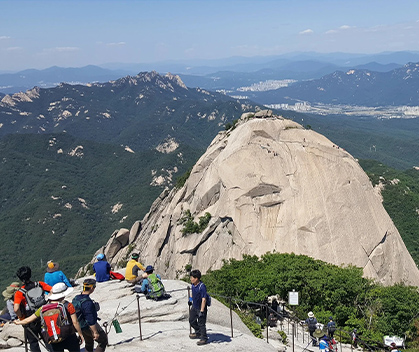
Bukhansan National Park
Bukhansan National Park, situated in the northern part of Seoul, is a stunning natural sanctuary known for its dramatic granite peaks and verdant forests. Covering over 80 square kilometers, the park offers a network of hiking trails catering to all levels of fitness. The rugged terrain includes the highest peak, Baegundae, which provides panoramic views of Seoul and the surrounding landscape. The park is also home to ancient temples and historical sites, such as the Bukhansanseong Fortress, which adds a historical dimension to the hiking experience. Its diverse ecosystems support a variety of wildlife and plant species, making it a significant site for nature enthusiasts. Whether you're seeking a challenging hike or a peaceful escape into nature, Bukhansan National Park offers a refreshing retreat from the city’s hustle.
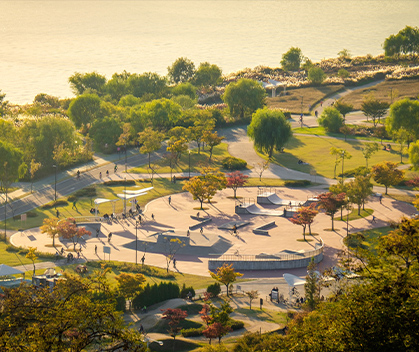
Hangang Park
Hangang Park, stretching along the Han River, is a cherished urban oasis in Seoul, providing a vast expanse of green space and recreational opportunities. Spanning approximately 40 kilometers, the park offers diverse amenities, including cycling paths, jogging trails, and picnic areas, catering to both active and leisurely pursuits. The park’s scenic riverbanks are ideal for a relaxed stroll or a boat ride, with beautiful views of the Han River and the city skyline. Seasonal events, such as outdoor concerts and festivals, enhance the park’s vibrant atmosphere, attracting locals and tourists alike. The park is also home to sports facilities, including basketball and soccer fields, and features picturesque gardens and water fountains. Hangang Park is the perfect destination for enjoying Seoul’s natural beauty, engaging in outdoor activities, or simply unwinding by the river.
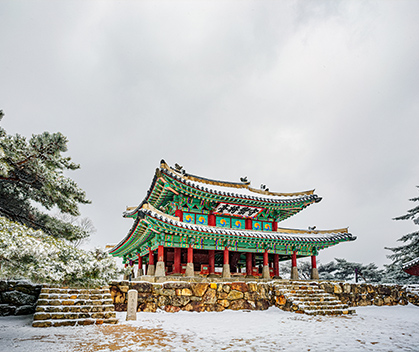
Namhansanseong
Namhansanseong, a historic fortress located on Namhansan Mountain, is a UNESCO World Heritage Site renowned for its cultural and historical significance. The fortress was originally built in the 17th century as a defensive structure and served as a temporary capital during the Japanese invasions of Korea. Today, visitors can explore the well-preserved walls, gates, and watchtowers, which offer insight into Korea’s military history. The surrounding area features scenic hiking trails and panoramic views of the surrounding countryside. The fortress complex includes several temples and pavilions, adding to its historical charm. Namhansanseong provides a fascinating blend of history, nature, and stunning views, making it a must-visit for history buffs and outdoor enthusiasts alike.
FOOD PARADISE
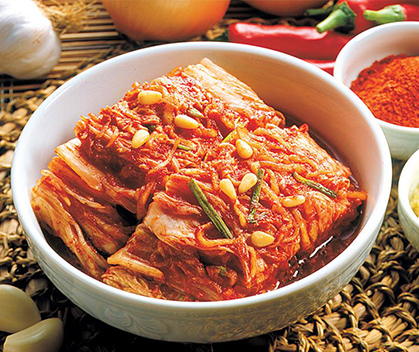
Kimchi
Kimchi is a cornerstone of Korean cuisine, celebrated for its tangy, spicy flavor and health benefits. This traditional fermented vegetable dish typically uses napa cabbage or radish, combined with a blend of chili pepper flakes, garlic, ginger, fish sauce, and sometimes sugar. The fermentation process, which can last from a few days to several months, develops its signature sourness and a depth of umami. Kimchi’s probiotic qualities contribute to digestive health and overall wellness. It’s incredibly versatile, serving as a side dish, condiment, or ingredient in a variety of Korean recipes like kimchi stew (kimchi jjigae) and kimchi fried rice. Its vibrant red color and pungent aroma make it a distinctive and integral part of Korean meals.
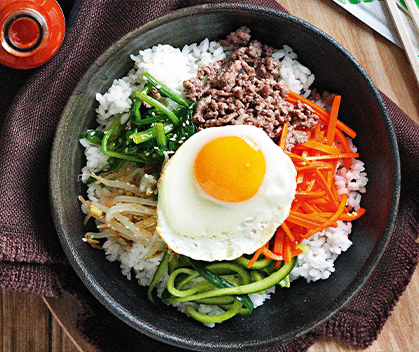
Bibimbap
Bibimbap is a quintessential Korean dish known for its colorful presentation and balanced flavors. The name means "mixed rice," and the dish consists of a bowl of steamed white rice topped with an assortment of vegetables such as sautéed spinach, carrots, bean sprouts, and mushrooms. Often, it includes a choice of protein, like beef or tofu, and is finished with a fried egg. The dish is traditionally seasoned with gochujang, a Korean chili paste that adds a spicy and slightly sweet kick. To eat, all the ingredients are mixed together, combining textures and flavors into a harmonious and satisfying meal. Bibimbap is celebrated for its nutritional balance and vibrant appearance, making it a favorite both in Korea and internationally.

Bulgogi
Bulgogi, which translates to “fire meat,” is a popular Korean barbecue dish made from marinated beef that is grilled or stir-fried. The beef, usually thinly sliced sirloin or rib-eye is marinated in a mixture of soy sauce, sugar, sesame oil, garlic, and pepper, which imparts a deliciously sweet and savory flavor. The marinade tenderizes the meat and helps it caramelize during cooking, creating a slightly smoky and richly flavored dish. Bulgogi is often served with a side of steamed rice and accompanied by lettuce leaves, which are used to wrap the meat along with a dollop of ssamjang (a savory dipping sauce). It is a beloved dish in Korean cuisine, known for its rich taste and tender texture.
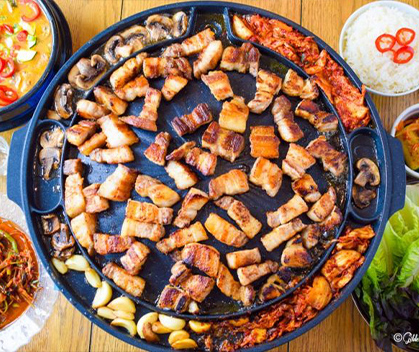
Samgyeopsal
This popular dish features thick slices of unseasoned pork belly, which are cooked on a hot grill right in front of diners. The key to a perfect samgyeopsal experience is the interaction between the sizzling meat and the accompanying array of side dishes and condiments. As the pork belly grills, it crisps up beautifully while maintaining a tender, juicy interior. Diners typically enjoy samgyeopsal by wrapping the grilled pork in fresh lettuce leaves with a dollop of ssamjang (a savory dipping sauce) and adding garlic, green peppers, and a slice of kimchi. The combination of flavors and textures—from the smoky, crispy pork to the fresh, crunchy vegetables—makes samgyeopsal a hearty and satisfying meal. The interactive cooking and communal eating make it a social and enjoyable dining experience.

